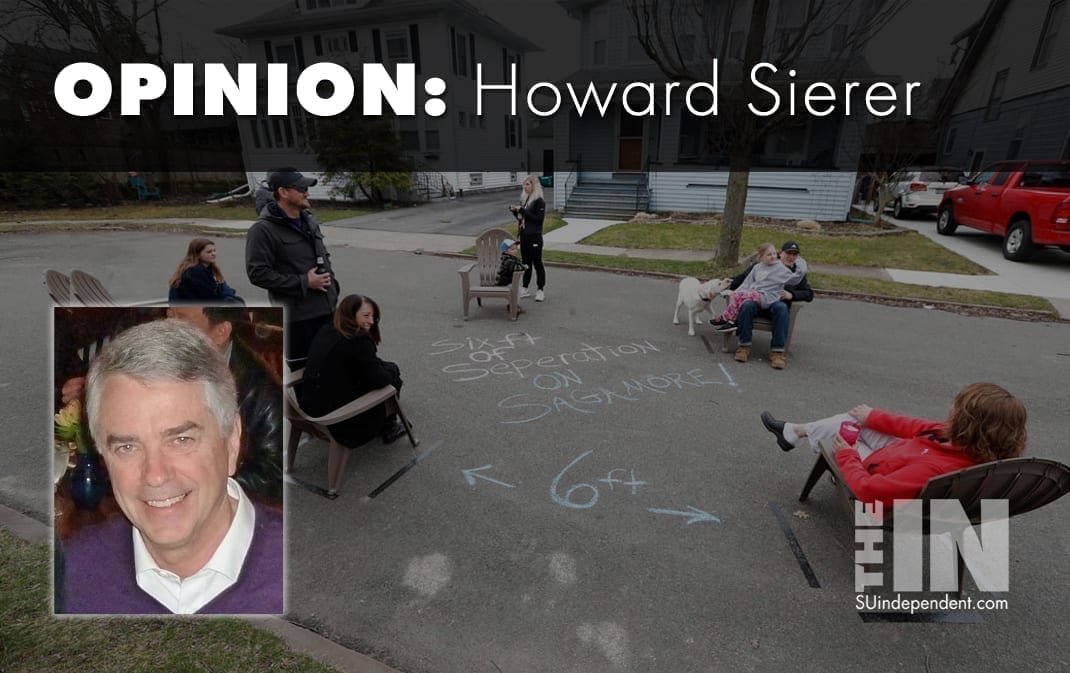
Social Distancing Saves Lives, Not Business Lock-Downs
As we learn more about COVID-19, it’s becoming increasingly clear that most lockdowns did far more harm than good. Accumulating data shows that social distancing saves lives, not business lockdowns.
When government leaders began taking action in March, little was known about how fast the virus would spread and how deadly it might be. All-encompassing lockdowns, too often enforced with arbitrary arrests, were the blunt weapon of choice to force social distancing.
Lockdowns’ clearly stated purpose was to avoid overloading hospitals and medical providers, a major concern as the number of COVID-19 cases multiplied. That goal was achieved in early April.
Only the densely-populated New York and Detroit metro areas exceeded available hospital resources. Doctors, nurses, and the staff there were heavily loaded and stressed. Health care providers there and everywhere are the pandemic’s heroes.
Hindsight is 20/20 and we are now accumulating data that shows that with few exceptions, lockdowns did not lower the number of COVID-19 deaths: social distancing would have been sufficient.
Because responding to COVID-19 was best handled regionally or locally (note to Democrats: one size doesn’t fit all in a country as big and diverse as the U.S.), the variety of approaches implemented in various U.S. states as well as in other countries became a worldwide experiment. Comparing results is illustrative.
Start with Australia and New Zealand, as close to an ideal experiment as the pandemic allows. Both are geographically isolated from other nations and from each other. They’re economically advanced and have similar population mixes.
Per Oxford University’s stringency index, New Zealand implemented one of the strictest lockdowns in the world. Its rules closed all businesses except grocery stores and pharmacies and restricted people from interacting with anyone other than household members even to attend funerals.
Australia put in place strict social-distancing measures – limiting social gatherings to just two people – but kept many businesses open, including mining, construction, and restaurants for takeout.
The results: New Zealand has 300 infections per million citizens while Australia’s rate is a similar 270 infections per million. But New Zealand’s economy is expected to contract 10.4 percent this year with a 13.4 percent unemployment rate this quarter. Australia expects a 4.7 percent contraction and 10 percent unemployment.
Chalk one up for social distancing, face masks, and common sense.
Unlike hard-hit France, Italy, Spain, and the U.K, new COVID-19 cases in Germany dropped steadily through April despite its less-onerous restrictions. Germany allowed most factories and offices to stay open throughout its five-week lockdown of schools, nonessential stores, and restaurants.
So how are things playing out in the U.S.?
Comparing states’ death rates per million in the 21 days following their first COVID-19 death is revealing. As shown through rigorous analysis, death rates were not lower in states that locked down early – in a number of cases well before their first death – compared with those that waited days or even weeks after their first death.
For example, Oregon’s death rate in the first 21 days after its first death was 20 per million; New York’s was 360 per million. California’s death rate per capita is less than 5 percent of New York’s.
Clearly factors other than lockdowns predominated, things like New York’s population density, subway use, and the state’s failure to protect nursing homes where 5,000 elderly have died.
A recent paper from the National Bureau of Economic Research makes the case that targeted lockdowns aimed at seniors combined with social distancing for all would have reduced death rates by more than a universal lockdown and with less economic harm. That makes sense to me since most deaths are among seniors, especially those in senior care facilities.
Data shows that the great majority of Americans are making rational decisions about protecting their own health.
Early projections of over 200,000 American deaths assumed that only 50 percent of the public would follow social distancing guidelines. Projected fatalities were reduced when data showed that over 90 percent are complying.
While a number of governors, both Republicans and Democrats, loosened business restrictions starting in late April and Utah moved to its Orange “moderate risk” status on May 1st, look instead at who’s really calling the reopening shots.
Businesses in South Carolina and Georgia, early reopening states, discovered that customers have been slow to come out. Newly confirmed in Georgia cases are trending down despite reopening. In Florida, cellphone tracking data showed people there began hunkering down in mid-March, well before the state’s lockdown order on April 3rd.
“Open it and they will come” is happening only slowly, demonstrating prudent consumer behavior.
I saw an example of this on my first trip to Costco after a hiatus of six weeks. I was surprised to find all customers social distancing and wearing masks during its “over age 60 hour.” And this before Costco announced that it would begin requiring masks on all its customers beginning this last week.
Once again, government-knows-best elites and nanny-state advocates in the media have been proven wrong: Americans are making responsible, individual decisions about their health based on public health information.
COVID-19 will be around for a while and might even become the new normal: get comfortable with social distancing and your mask. But let’s hope that government leaders don’t order more across-the-board lockdowns.
Viewpoints and perspectives expressed throughout The Independent are those of the individual contributors. They do not necessarily reflect those held by the staff of The Independent or our advertising sponsors. Your comments, rebuttals, and contributions are welcome in accordance with our Terms of Service. Please be respectful and abide by our Community Rules. If you have privacy concerns you can view our Privacy Policy here. Thank you!
Click here to submit an article, guest opinion piece, or a Letter to the Editor




